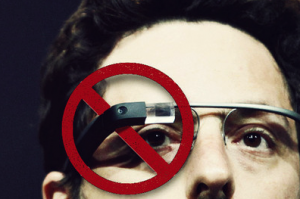 For businesses building digital platforms capture is both a technical and social problem and invitation is one way of addressing it. How do you build technologies that efficiently allow any user (young, older, in North America or in Africa) to capture various facets of social life? The technological answer to the problem is not necessarily one that a single designer or corporation might provide but rather it’s achieved through the deployment of a number of technological solutions that in aggregate create a generally persistent, present and pervasive capture system. This is invitation.
For businesses building digital platforms capture is both a technical and social problem and invitation is one way of addressing it. How do you build technologies that efficiently allow any user (young, older, in North America or in Africa) to capture various facets of social life? The technological answer to the problem is not necessarily one that a single designer or corporation might provide but rather it’s achieved through the deployment of a number of technological solutions that in aggregate create a generally persistent, present and pervasive capture system. This is invitation.
In conjunction with social practices, the capture platform has an affective outcome, users come to “see” it as an alternative, as a means for engaging in communicative practice. A capture system’s presence invites, first through its relative every-whereness, then through its quiet whispers: a “like” button at the end of an article or a product sold online, a vibration in our pocket, a soft bell somewhere in the room that beckons us to find it. We are through those simple cues, reminded that not only is the platform open 24 hours a day, 7 days a week, but that our friends are using it.
 But pervasiveness is not enough for an architecture to invite, it must also have meaning through the types of communication practices that are invited and that are discovered by users. Invitation relays on technology to afford those practices but also opens itself to them, creating a level of plasticity that is playful. Invitation is bounded by rules and openness so that social practices and experimentation can squeeze into capture. Openness, then, is the social portion of invitation, but like any open invitation, boundaries exist (sometimes subtle, other times overt) which then configure how we RSVP. The way the platform is mirror, mirror on the wall, the way it communicates to us our potential to participate and then configures rewards, turns us toward it. As my good friend and collaborator here on Culture Digitally, Tarleton Gillespie, would say, we orient ourselves to the algorithm. Thus we are more than invited, we are seduced.
But pervasiveness is not enough for an architecture to invite, it must also have meaning through the types of communication practices that are invited and that are discovered by users. Invitation relays on technology to afford those practices but also opens itself to them, creating a level of plasticity that is playful. Invitation is bounded by rules and openness so that social practices and experimentation can squeeze into capture. Openness, then, is the social portion of invitation, but like any open invitation, boundaries exist (sometimes subtle, other times overt) which then configure how we RSVP. The way the platform is mirror, mirror on the wall, the way it communicates to us our potential to participate and then configures rewards, turns us toward it. As my good friend and collaborator here on Culture Digitally, Tarleton Gillespie, would say, we orient ourselves to the algorithm. Thus we are more than invited, we are seduced.
Let us not forget the power of cool, of design. I always think of the first time I held an iPhone. Its sleekness, its subsequent rapid penetration, widespread adoption and its touchability all extending an invitation. We could not help but want to reach out to it. Its connection to networking infrastructures and web platforms and other inviting technologies make arguments for capture. Now that we’ve snapped that image, why not share it online? Now that you’ve heard your friend make that funny comment, why not Tweet it?
 Henry David Thoreau optimistically wrote “All men want, not something to do with, but something to do, or rather something to be.” I’d argue that inviting technologies might show us something different; that through design some technologies make what we do with integral to who we are. If what we do is what we are, if we are our practices, then we must recognize that capture platforms and their networks are not only designed to functionally record but also to be rhetorical devices, making subtle but powerful arguments for being the best means for both performing and representing “self.” The best way of being you.
Henry David Thoreau optimistically wrote “All men want, not something to do with, but something to do, or rather something to be.” I’d argue that inviting technologies might show us something different; that through design some technologies make what we do with integral to who we are. If what we do is what we are, if we are our practices, then we must recognize that capture platforms and their networks are not only designed to functionally record but also to be rhetorical devices, making subtle but powerful arguments for being the best means for both performing and representing “self.” The best way of being you.
Invitation also implies the creation of practice. In other words, while technology companies may strive to make capture convenient and efficient, social practices performing capture must themselves be “captured.” Any given user may be a compulsive picture taker, for example, but if that user never distributes that picture as part of a platform, then that practice is, for businesses that trade in the social, a lost treasure. To meet this demand pervasiveness, design, identity, playfulness are all deployed together, positioning social media as an attractive and likely place to carry on sociability in traditional ways and in ways framed by technology. My point here is that capture practices are framed by capture systems as they provide the means for communication. In this case the medium is the practice.
 While invitation is the slight break in personal space, the soft brush of the elbow and a smile, coercion is not as subtle and strongest when the platform is widely adopted. Anyone who has attempted to permanently delete his or her Facebook page will note this. Here I’m not talking about quitting Facebook but rather effectively deleting one’s profile. Facebook gives you what amounts to a cooling off period after which a profile’s data cannot be recovered. The process for me involved a parade of images of my friend’s children and the question was posed, “Do you really want to leave them?” The quandary of leaving a community that had come to depend on me, or at least the assurance of my continued presence on our spec of dust as part of a spectrum of friends, was framed as abandonment. Coercion in capture is a sort of social force, a momentum that manifests in aggregate, in capture’s inescapability, its personal utility, even its morality.
While invitation is the slight break in personal space, the soft brush of the elbow and a smile, coercion is not as subtle and strongest when the platform is widely adopted. Anyone who has attempted to permanently delete his or her Facebook page will note this. Here I’m not talking about quitting Facebook but rather effectively deleting one’s profile. Facebook gives you what amounts to a cooling off period after which a profile’s data cannot be recovered. The process for me involved a parade of images of my friend’s children and the question was posed, “Do you really want to leave them?” The quandary of leaving a community that had come to depend on me, or at least the assurance of my continued presence on our spec of dust as part of a spectrum of friends, was framed as abandonment. Coercion in capture is a sort of social force, a momentum that manifests in aggregate, in capture’s inescapability, its personal utility, even its morality.
 Conscription, the involuntary induction of selves into the service of the platform is a function of capture as its logic becomes social practice. Upload upload upload. But to where? And why, and what? The technological problem of capture becomes a bio-ware operation, a habit, most banal and potentially pernicious. A practice that is situated and valuable within a social framework of friends, families, fans and possible employers is in the broader sense of political economy a case of function creep. What starts off as friending, tweeting, and network building becomes the collection of inventory by hook or by crook, for Google, for Google.
Conscription, the involuntary induction of selves into the service of the platform is a function of capture as its logic becomes social practice. Upload upload upload. But to where? And why, and what? The technological problem of capture becomes a bio-ware operation, a habit, most banal and potentially pernicious. A practice that is situated and valuable within a social framework of friends, families, fans and possible employers is in the broader sense of political economy a case of function creep. What starts off as friending, tweeting, and network building becomes the collection of inventory by hook or by crook, for Google, for Google.
The notion of agents in capture plays a particularly important part in conscription. First because as a metaphor, agents illustrate adoption of a posture or an affect that sees the social as if perched atop a hill, possessing potential energy that a mere click might transform into social capital that spans the digital and the flesh. The agent is a bridge or conduit between the online practice and the offline practice. The platform asks us “is it Tweetable?” Often the answer is, “yes! yes it is!”and off it goes. But it isn’t really that simple. If all the research on social network platforms should amount to any one general conclusion it is this: That through social media we perform a host of actions which are always in conversation with mores, norms, laws, rules computational and social. If the agent is a bridge, an agent cannot escape accountability outside platform, on the side with oxygen and norms. The trick in designing agents is not to have them ask themselves a question like, “is it Tweetable,” but to design practices in platform that bleed into the practice of lifeworlds making Tweetability or Facebooking (yes, my students use it as a verb) a given in all or most of social life.
 It’s no wonder then that we are asking about privacy and what it means online, nagged by the feeling that whatever it is, it must be something new. Maybe a set of practices intimating multiple privacies or a commodity intimating an exchange relationship with our fellows and with social web platform owners. Ultimately we practice a new privacy, a new element of a shifting social order, which we must adopt or else the technological system and our mediated social network will fail. But privacy is not the only thing caught in the calculus of digital cultural production’s political economy. Identity, community, citizenship, participation; what is organic about us as human beings are all ready to be or already are: data, big data.
It’s no wonder then that we are asking about privacy and what it means online, nagged by the feeling that whatever it is, it must be something new. Maybe a set of practices intimating multiple privacies or a commodity intimating an exchange relationship with our fellows and with social web platform owners. Ultimately we practice a new privacy, a new element of a shifting social order, which we must adopt or else the technological system and our mediated social network will fail. But privacy is not the only thing caught in the calculus of digital cultural production’s political economy. Identity, community, citizenship, participation; what is organic about us as human beings are all ready to be or already are: data, big data.
 Conscription endangers agency and the place of our will in the interchange of information from us, about us. We feel it most when we discover that we’ve been aggregated by our cell phone carrier or when our images, emails or tags were collated and deeper knowledge about our selves is known. When collection of our incidental data, our mutterings and stuttering, are made big data through the algorithms that call into big data’s gaping cavernousness and draw from it echoes of selves we may not have otherwise known.
Conscription endangers agency and the place of our will in the interchange of information from us, about us. We feel it most when we discover that we’ve been aggregated by our cell phone carrier or when our images, emails or tags were collated and deeper knowledge about our selves is known. When collection of our incidental data, our mutterings and stuttering, are made big data through the algorithms that call into big data’s gaping cavernousness and draw from it echoes of selves we may not have otherwise known.